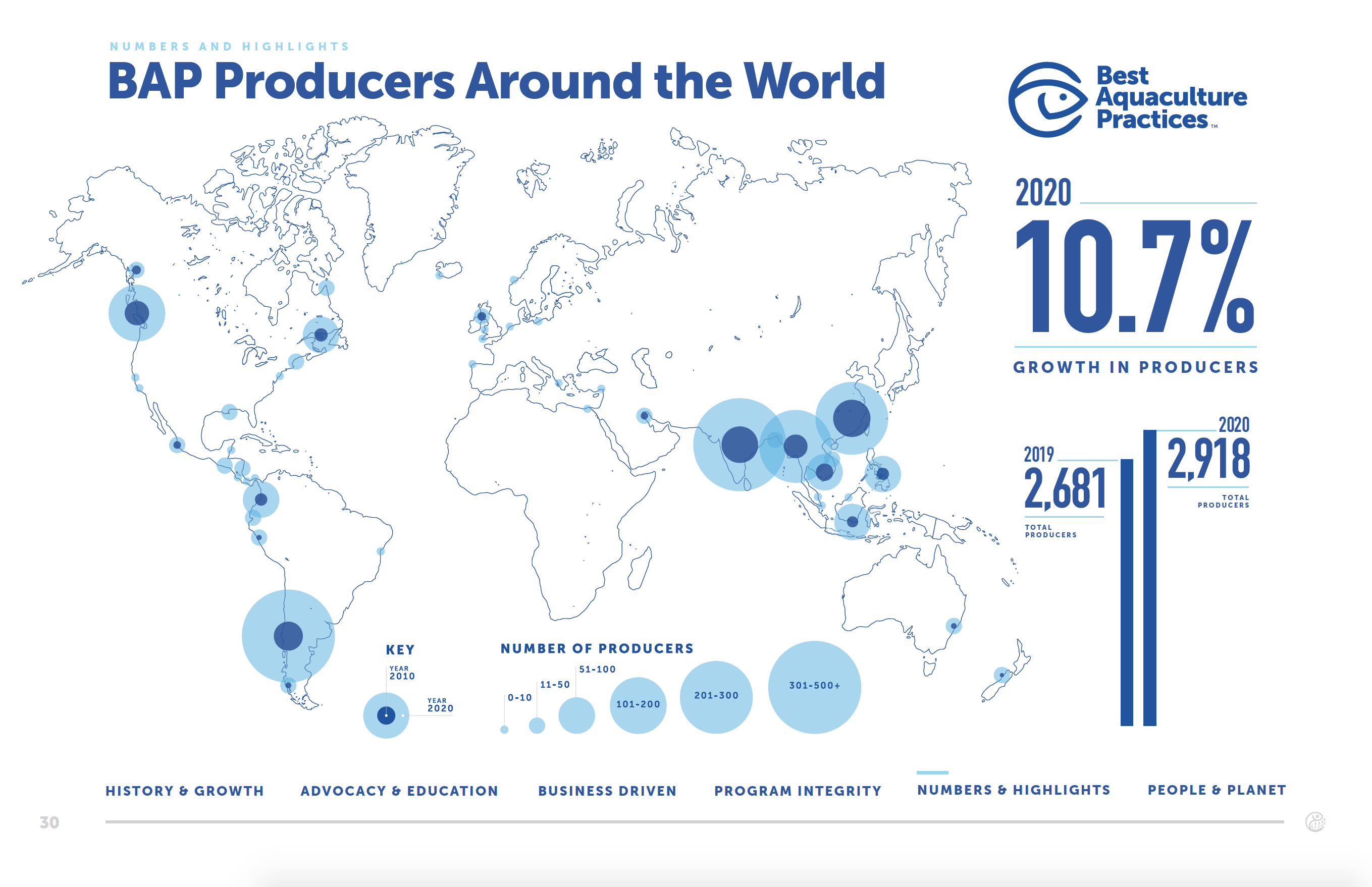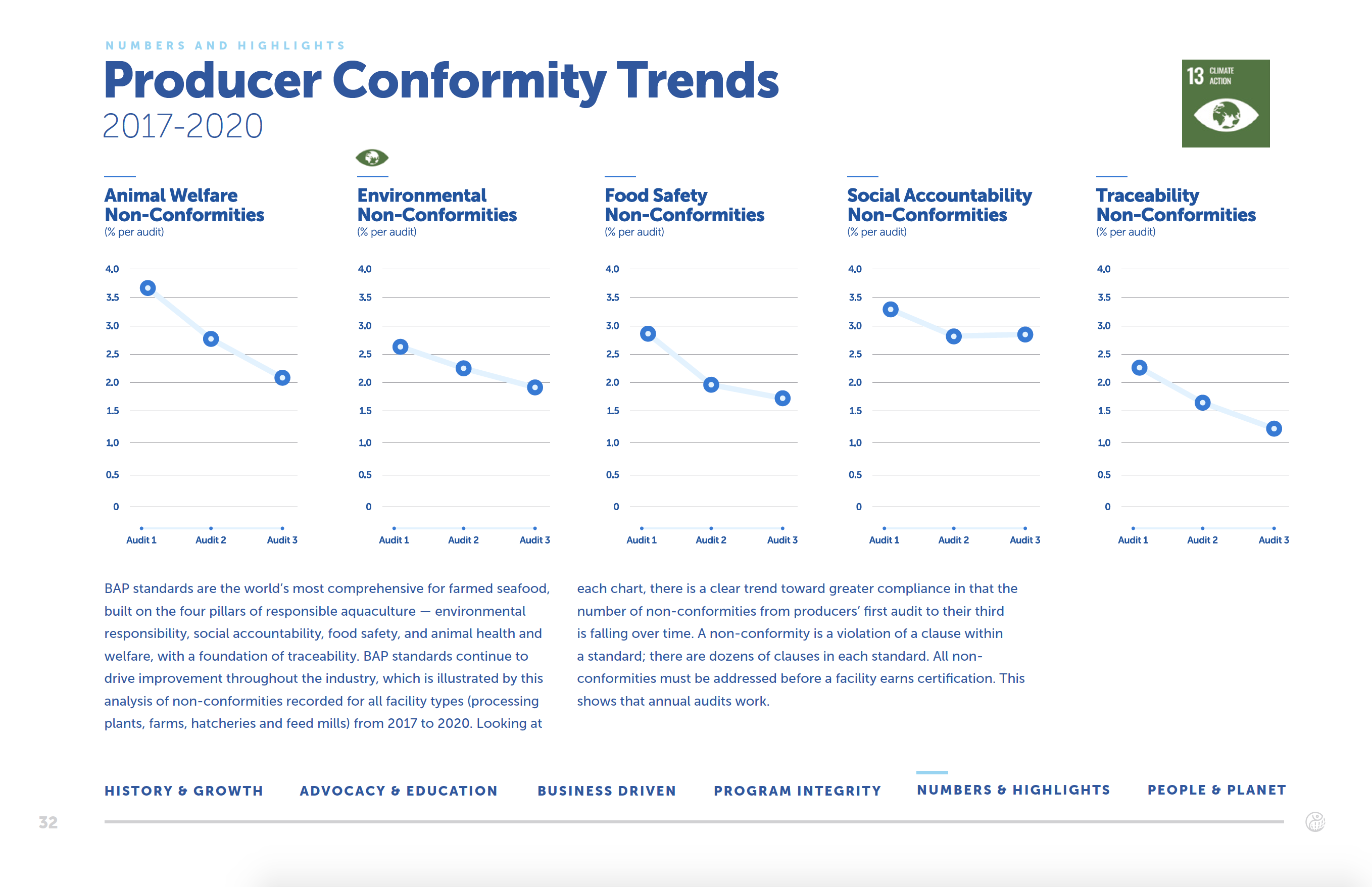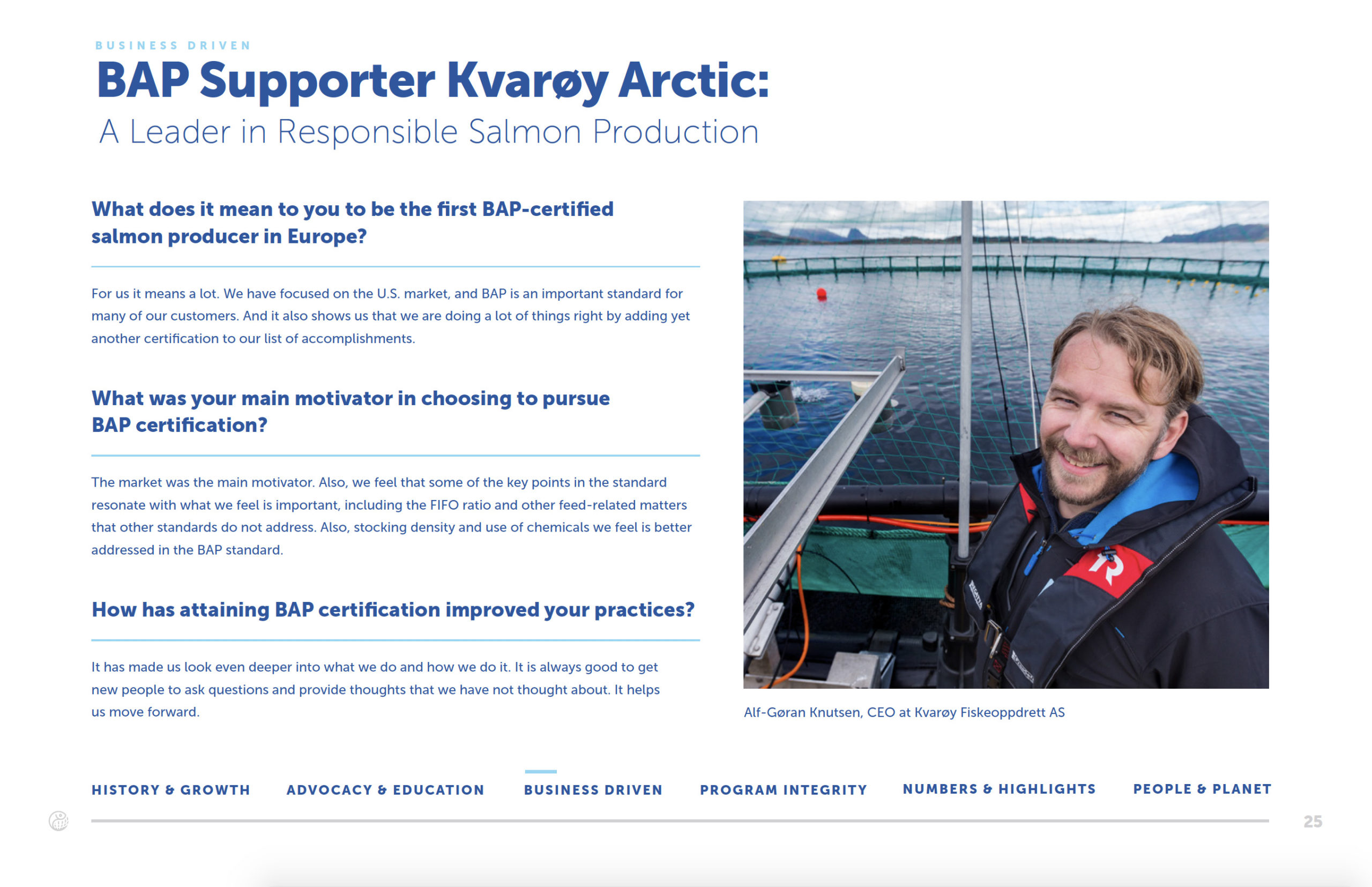GAA’s 2020 Annual Report Highlights Commitment to UN Sustainable Development Goals, Serving Members and Certified Facilities through Pandemic
The Global Aquaculture Alliance (GAA) on June 14, 2021, published its 2020 Annual Report.
 The 46-page 2020 Annual Report highlights GAA’s commitment to the United Nations’ Sustainable Development Goals (SGDs) as well as the nonprofit organization’s commitment to serving its almost 400 individual and corporate members and its more than 2,900 Best Aquaculture Practices (BAP)-certified facilities during a challenging year defined by the COVID-19 pandemic. Approximately 305,000 people are employed by BAP-certified facilities, which produced an estimated 23 billion meals (based on a 4-ounce serving).
The 46-page 2020 Annual Report highlights GAA’s commitment to the United Nations’ Sustainable Development Goals (SGDs) as well as the nonprofit organization’s commitment to serving its almost 400 individual and corporate members and its more than 2,900 Best Aquaculture Practices (BAP)-certified facilities during a challenging year defined by the COVID-19 pandemic. Approximately 305,000 people are employed by BAP-certified facilities, which produced an estimated 23 billion meals (based on a 4-ounce serving).
“I am incredibly proud of my GAA associates for their achievements in 2020. We should also be proud of the women and men in the industry who surmounted the challenges of 2020 with courage and commitment. Just think what we can achieve in 2021 and beyond with that same professionalism and passion. This is a great opportunity for us to live up to our aspirations for a healthy global society, where all 17 SDGs are consistently being addressed,” said GAA CEO Wally Stevens in his “Letter from the CEO.”
Each accomplishment outlined in the 2020 Annual Report supports one or more of the 17 SDGs as well as GAA’s vision, “A world that embraces and enables the role of responsibly farmed seafood in meeting global nutrition needs.” Among the accomplishments are:
• Despite the pandemic, the number of BAP-certified processing plants, farms, hatcheries and feed mills increased 10.7 percent, to 2,918, from the end of 2019 to the end of 2020. BAP truly is a global program, with facilities in 39 countries, representing 29 seafood species. That includes 236 BAP-certified processing plants eligible to offer four-star BAP seafood, signifying that the product originates from the BAP-certified farm, hatchery, feed mill and processing plant. The rate of retention for BAP-certified facilities totaled 91 percent in 2020. (See pages 30 and 31.)
• Among BAP-certified facilities, there is a clear trend toward greater compliance in that the number of non-conformities from facilities’ first audit to their third is declining over time. This shows that annual audits work. For example, the number of non-conformities for environmental-related clauses fell from 2.68 percent of the total number of clauses to 1.93 percent from the first audit to the third audit, while the number of non-conformities for animal health and welfare-related clauses slipped from 3.66 percent to 2.09 percent. The number of non-conformities for clauses related to social accountability, food safety and traceability also dropped. A non-conformity is a violation of a clause within a standard; there are dozens of clauses in each standard. All non-conformities must be addressed before a facility earns certification. (See page 32.)
• The trend toward greater compliance from the first audit to the second audit to the third audit is occurring despite the pandemic restricting travel, stifling onsite audits. When COVID-19 took hold in the first quarter of 2020, BAP swiftly pivoted to a remote-auditing solution and ended 2020 with more than 700 remote audits across all facility types, without compromising the integrity of the program. The BAP team collaborated with its certification bodies, accreditation bodies and benchmarking organizations to ensure that its third-party auditors were well trained to remotely perform audits, whether partial or full.
• Despite its maturity, the BAP program continued to register a number of “firsts” in 2020, including Japan’s first retailer to actively market BAP seafood (Seiyu), Spain’s first retailer to add BAP to its sustainable seafood sourcing policy (Mercadona), Europe’s first company to attain four-star BAP status (The Scottish Salmon Company) and Norway’s first salmon farm to earn BAP certification (Kvarøy Fiskeoppdrett).
• Since its inception in 1997, GAA has acted as a voice for responsible aquaculture. Without deviating from its science-based approach to address the challenges and opportunities facing aquaculture, GAA has grown its audience immensely, particularly over the past 10 years. When COVID-19 took hold, GAA was already well positioned to shift its communications from in-person to digital. Driven mainly by GAA’s signature news outlet, the Global Aquaculture Advocate, the GAA website averaged 105,000 monthly pageviews in 2020, while Aquademia podcast downloads nearly doubled to 21,650, social-media followers reached 225,000 and media impressions topped 6 billion. (Those numbers continue to climb in 2021.) Additionally, GAA’s signature GOAL: The Responsible Seafood Conference transitioned from in-person to virtual, attracting 800 active attendees, many of whom were experiencing GOAL for the first time.
Though the organization is best known for its BAP third-party certification program and its media, events and membership, GAA is constantly evolving. This year, GAA is transitioning to the Global Seafood Alliance, the outcome of its budding involvement in wild fisheries through the addition of the Responsible Fishing Vessel Standard and Seafood Processing Plant Standard (Issue 5.1), which encompasses both farmed and wild seafood.
Click here, or on one of the images below to access a PDF of the 2020 Annual Report.







